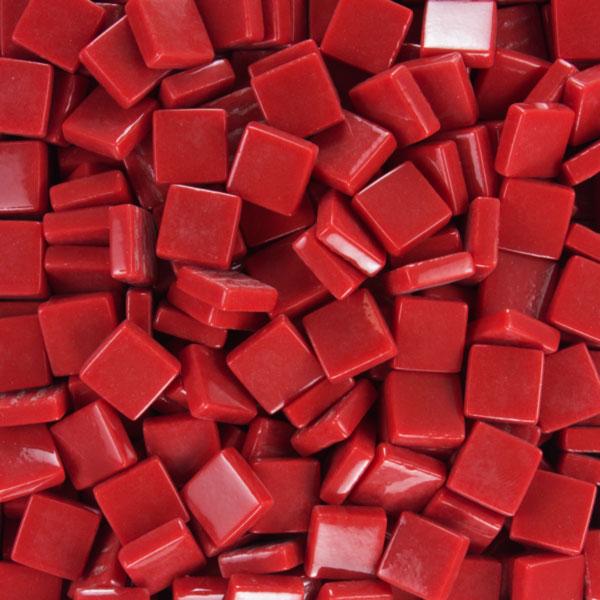
Cad Red Medium 12E109



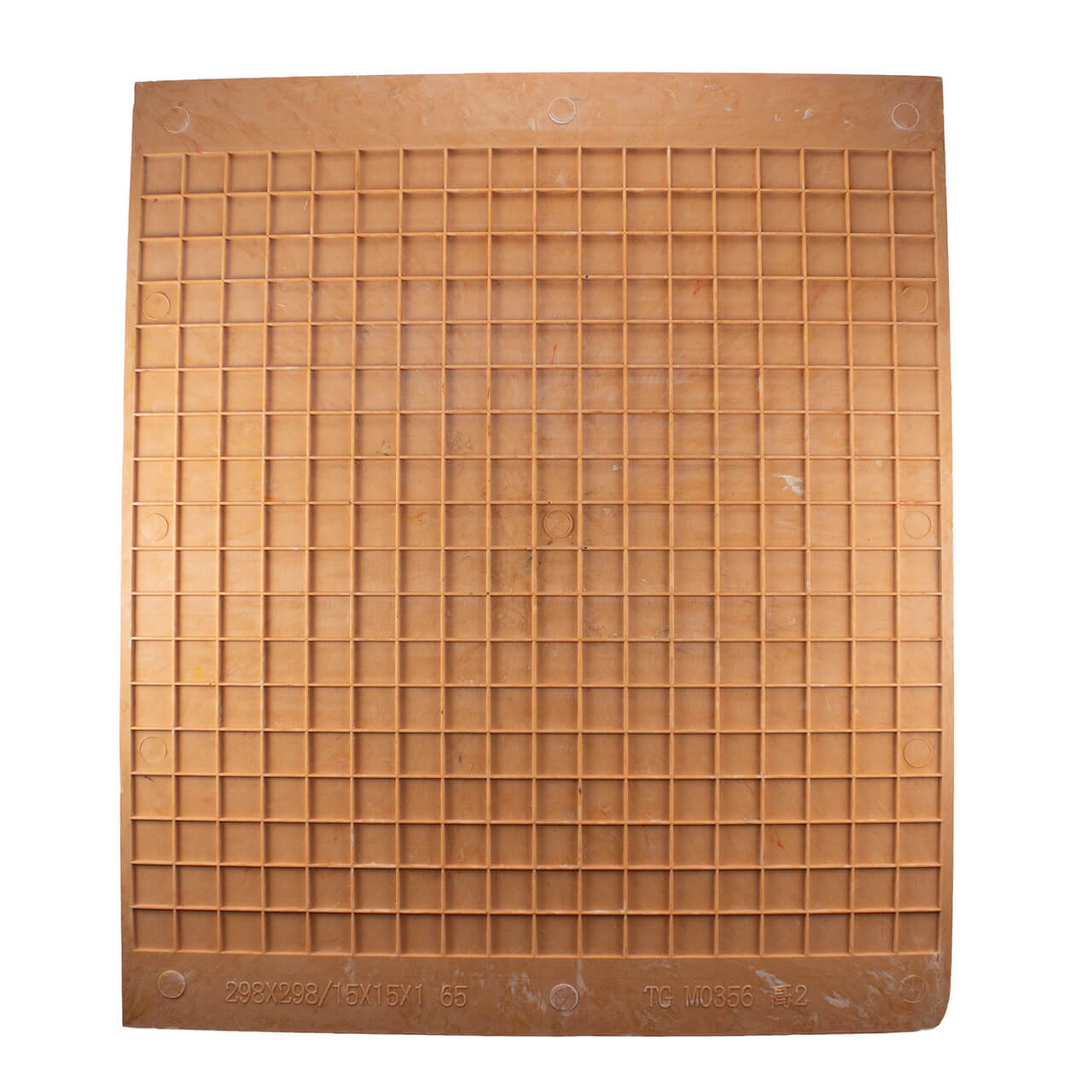
Mosaic Tile Mounting Grid 15mm is for temporarily mounting 15mm tiles on paper or clear tape for rapid installation using the indirect method. NOT NEEDED FOR BEGINNERS. Most artists glue each tile directly on the surface they are covering and do not need grids. In fact, original mosaic art looks best when tile is cut into pieces and mounted in a pattern that is not a grid.
The grid mounts 324 glass mosaic tiles (15mm size) on a 1.15 square foot piece of mosaic mounting paper in a uniform grid of 18 x 18 tiles with a standard grout gap of approximately 1mm.
Note that the sockets of the grid are not beveled. This grid was designed for tiles with straight sides and not tapered/beveled sides.
This grid is NOT suitable for the 15mm Colored Mirror Tile we sell because those tiles have mold flashing on the sides.
Mosaic tile can be glued one at a time DIRECTLY to a surface, or you can lay your mosaic out on a temporary surface in what is called the “Indirect Method.” Temporary surfaces can include things like fiberglass mesh, paper, adhesive contact paper, or trays filled with lime putty. Our grids were made to work with self-adhesive mounting tape or mounting paper that is temporarily glued to the faces of the tiles.
Why would you want to use the Indirect Method? It is easier to lay up your mosaic design at your work table than it is to lay it out on a floor or a wall or some other vertical surface. Also, you can work for days or weeks at your work table laying up the mosaic without tying up the location where the mosaic will actually be installed. Again, none of this is necessary for a beginner laying up a small craft project like a trivet or a mosaic mirror.
The following is how to do the indirect method using our grids and mounting paper:
For more advice on designing your mosaic project or cutting and grouting tile, please see our Mosaic Frequently Asked Questions page or our How To Mosaic blog or our Mosaic Information Guide.
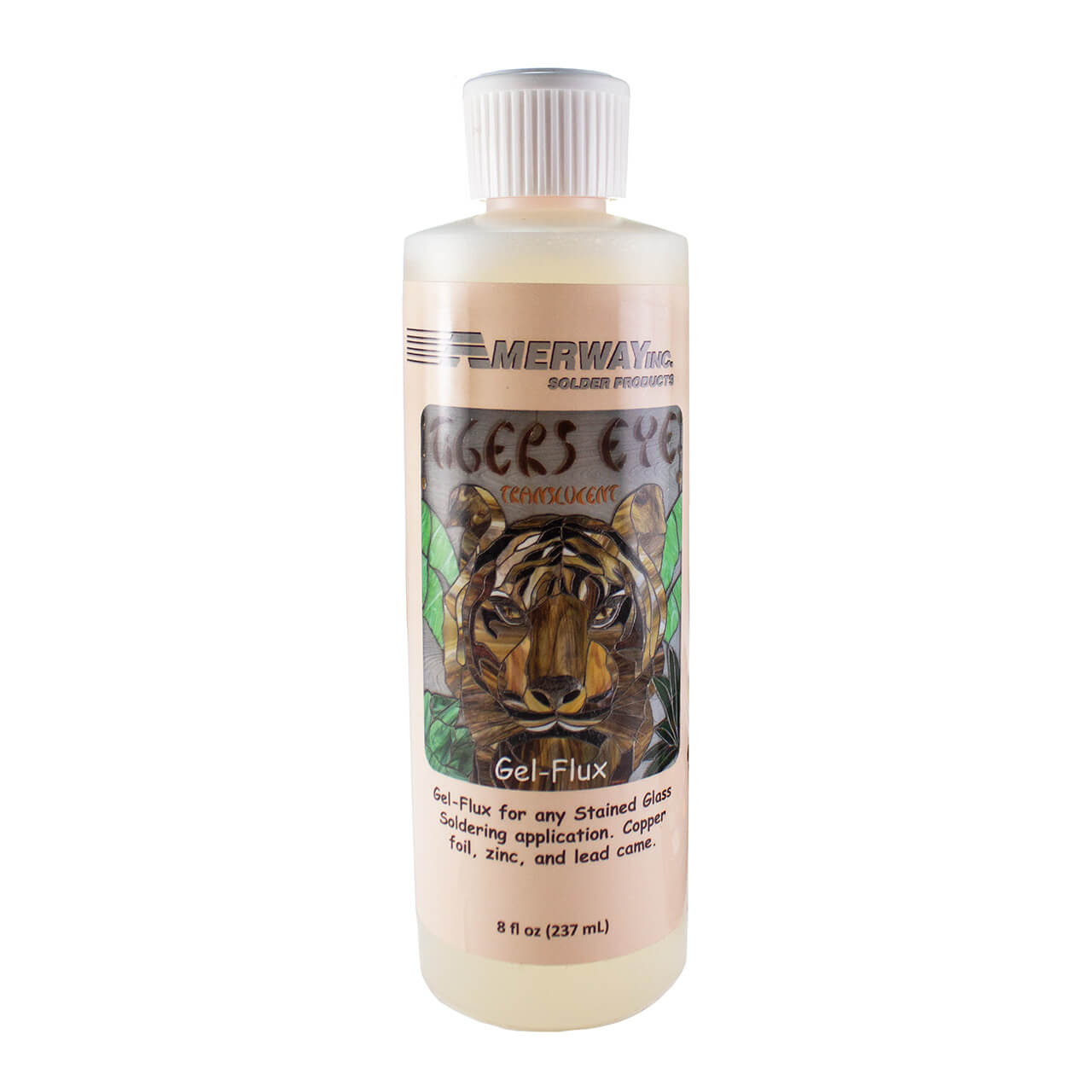
Amerway brand “Tigers Eye” Translucent Gel-Flux can be used for any stained glass soldering application – whether it is copper foil, zinc came, or lead came.
Tigers Eye Translucent Gel Flux
Yes! It’s nearly impossible to get the solder to flow where you want it without flux, especially with the copper foil method. The amount of time flux saves you makes it more than worth the cost.
For more advice on designing your mosaic project or mounting, cutting, and grouting tile, please see our page of Mosaic Frequently Asked Questions or our Mosaic Information Guide, which lists instructional pages described by topic. We also post new articles about making mosaics at our How to Mosaic Blog.
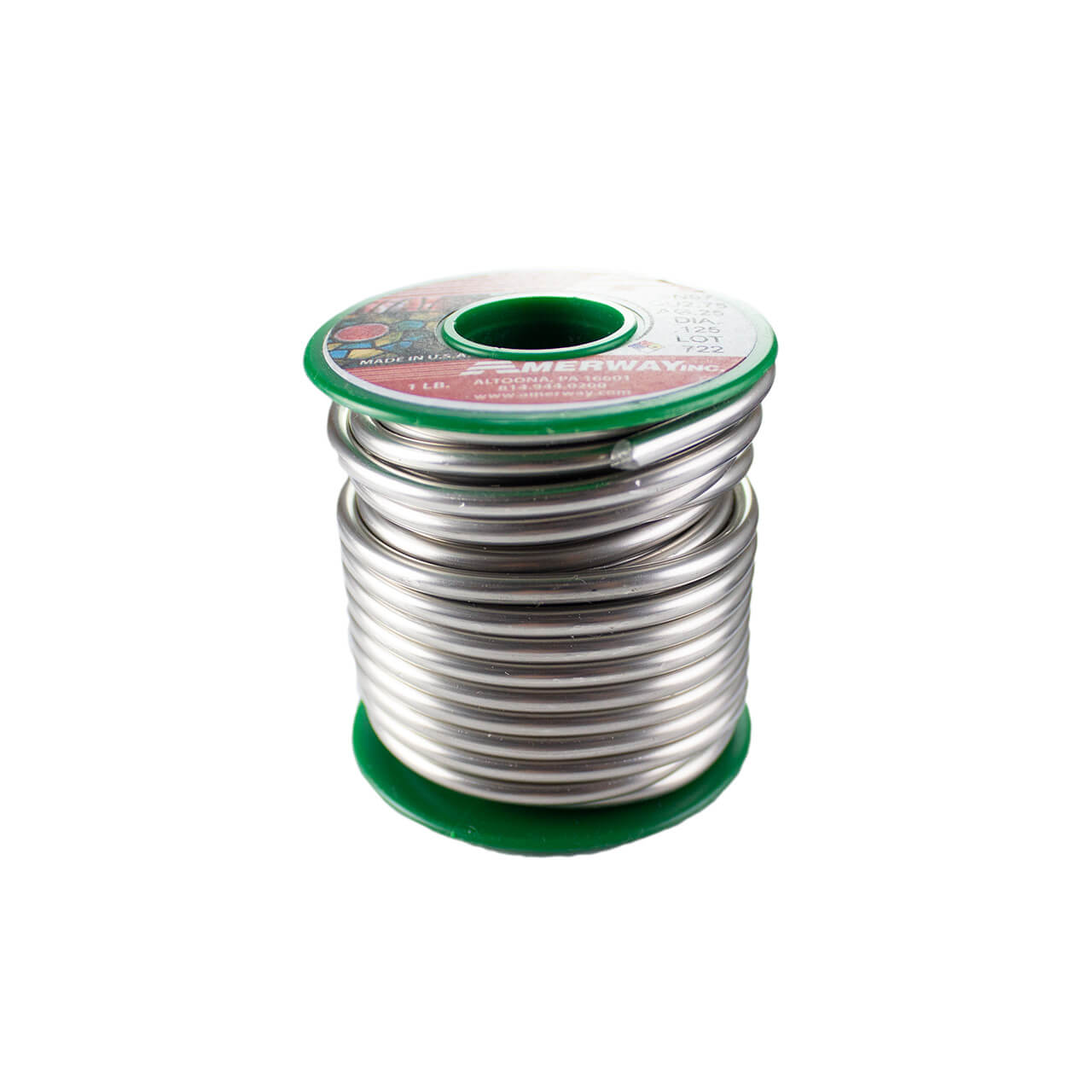 Amerway brand “Ruby” Lead-Free Solder is a top-of-the-line lead-free solder ideal for traditional stained glass art. The inclusion of a small amount of silver lowers its melting point and gives it more tensile strength than other lead-free solders.
Amerway brand “Ruby” Lead-Free Solder is a top-of-the-line lead-free solder ideal for traditional stained glass art. The inclusion of a small amount of silver lowers its melting point and gives it more tensile strength than other lead-free solders.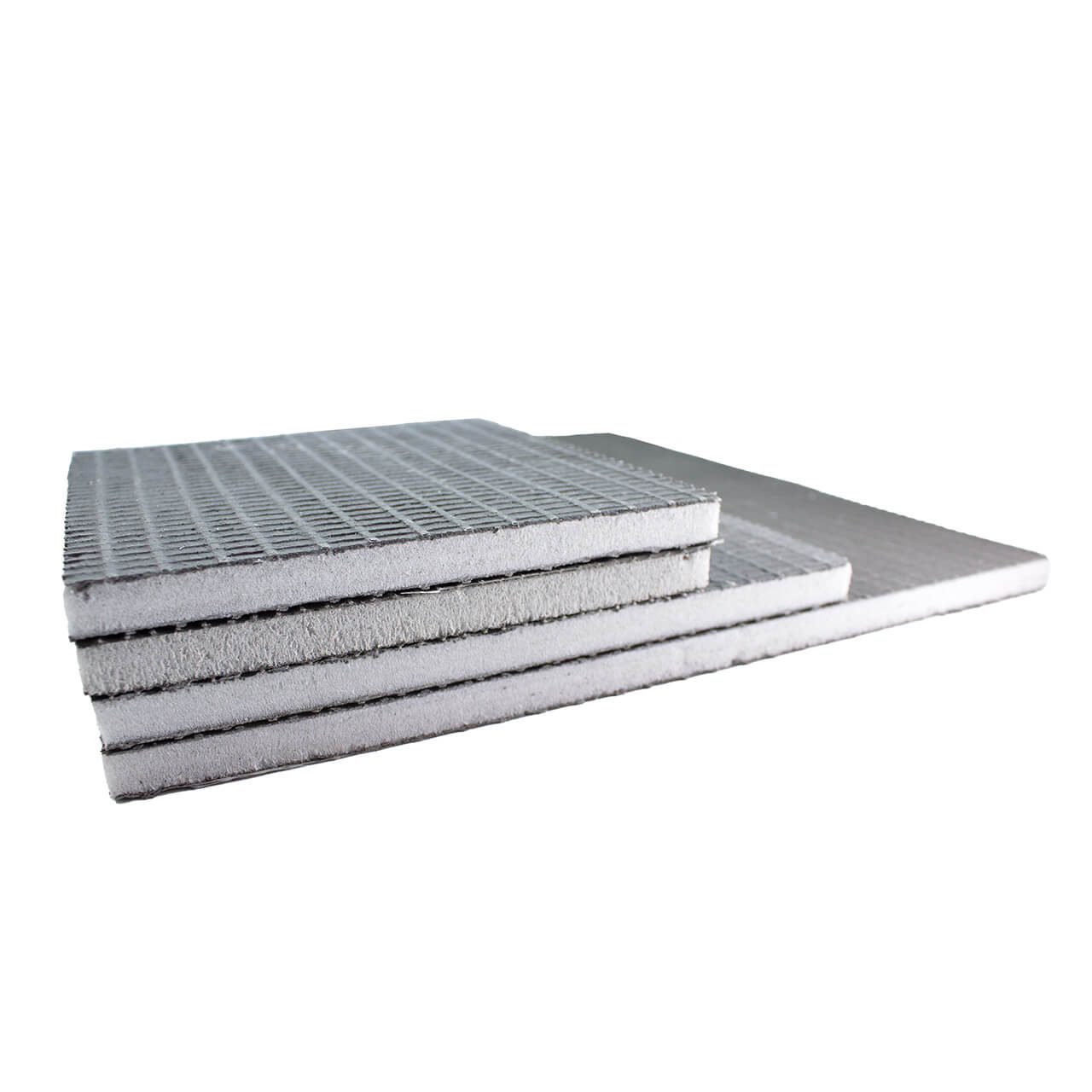
XPS Foam-Core Mosaic Backer Board is 1/2-inch foam core backer that has been hand-cut to size. Compare to “wedi®*” brand “wedi® Building Panel”. Dimensions can vary by approximately 1/16-inch. The edges are unfinished cuts, which can be painted with a neutral color of acrylic paint or enclosed by a frame, such as can be made with miter-cut wooden molding.
This material is an expanded polystyrene (XPS) foam laminated front and back with a fibreglass mesh and a very thin layer of polymer-modified cement.
May irritate skin; wear tiling gloves while handling if you have sensitive skin.
This material is has been rated for use on walls in wet locations such as showers. It should NOT be used in permanently-submerged installations such as pools or bird baths. It should NOT be used for floor-mounted mosaics. Not for commercial installations. We would recommend the smaller cut pieces we sell to be used as plaques for mosaic wall art, or for a light-duty installation like the inset top of a small decorative end table. The main advantages this material has over plywood backers is the lighter weight, and suitability for use in humid environments.
Make sure that your tile doesn’t stick out beyond the edge of the backer, which would make it particularly vulnerable to being knocked loose or chipped by random blows over time.
This material should NOT be used as a base for mosaic stepping stones. It should only be used for wall art or very light-duty applications.
Indoor wall-art mosaics can be made using this material instead of plywood to save weight. For dry indoor installations, the tiles can be mounted using a white PVA adhesive such as Weldbond and then grouted. For humid locations or outdoors you should use thinset to adhere tiles to the board.
For more advice on designing your mosaic project or mounting, cutting, and grouting tile, please see our page of Mosaic Frequently Asked Questions or our Mosaic Information Guide, which lists instructional pages described by topic. We also post new articles about making mosaics at our How to Mosaic Blog.
*wedi® is a registered trademark of the ©wedi Corporation and is unaffiliated with Mosaic Art Supply. This product is NOT wedi® Building Panel.
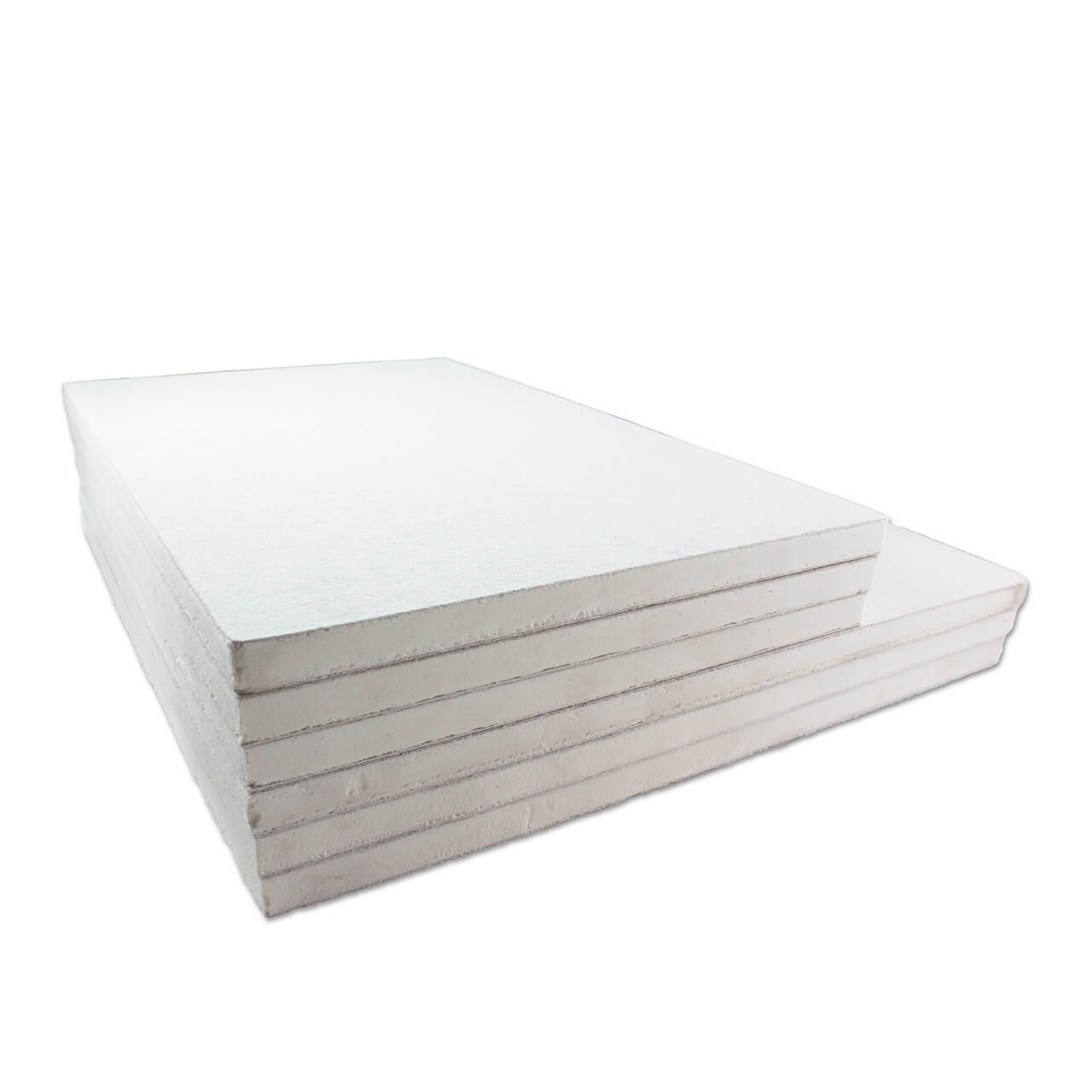
Foam-Core Mosaic Backer Board is 1/2-inch foam core backer manufactured by Johns Manville and branded as “GoBoard” that has been hand-cut to size. Dimensions can vary by approximately 1/16-inch. The edges are unfinished cuts, which can be painted with a neutral color of acrylic paint our enclosed by a frame, such as can be made with miter-cut wooden molding.
The faces of some boards may have small imperfections or printing from the factory, but these will be covered by the mosaic.
May irritate skin; wear nitrile gloves while handling if you have sensitive skin.
This material is more rigid than plywood or MDF and has been rated for use in wet locations such as showers. It should NOT be used in permanently-submerged installations such as pools or bird baths. It should NOT be used for floor-mounted mosaics in areas with even semi-frequent foot traffic, unless you use durable tiles and it is supported with a proper sub-floor. Not for commercial installations. We would recommend the smaller cut pieces we sell to be used as plaques for mosaic wall art, or for a light-duty installation like the inset top of a small decorative end table. The main advantages this material has over plywood backers is the lighter weight, and suitability for use in humid environments.
Make sure that your tile doesn’t stick out beyond the edge of the backer, which would make it particularly vulnerable to being knocked loose or chipped by random blows over time.
This material should NOT be used as a base for mosaic stepping stones. It’s rigid, but not strong enough to be walked on without a proper subfloor beneath it.
Indoor wall-art mosaics can be made using this material instead of plywood to save weight. For dry indoor installations, the tiles can be mounted using a white PVA adhesive such as Weldbond and then grouted.
For more advice on designing your mosaic project or mounting, cutting, and grouting tile, please see our page of Mosaic Frequently Asked Questions or our Mosaic Information Guide, which lists instructional pages described by topic. We also post new articles about making mosaics at our How to Mosaic Blog.
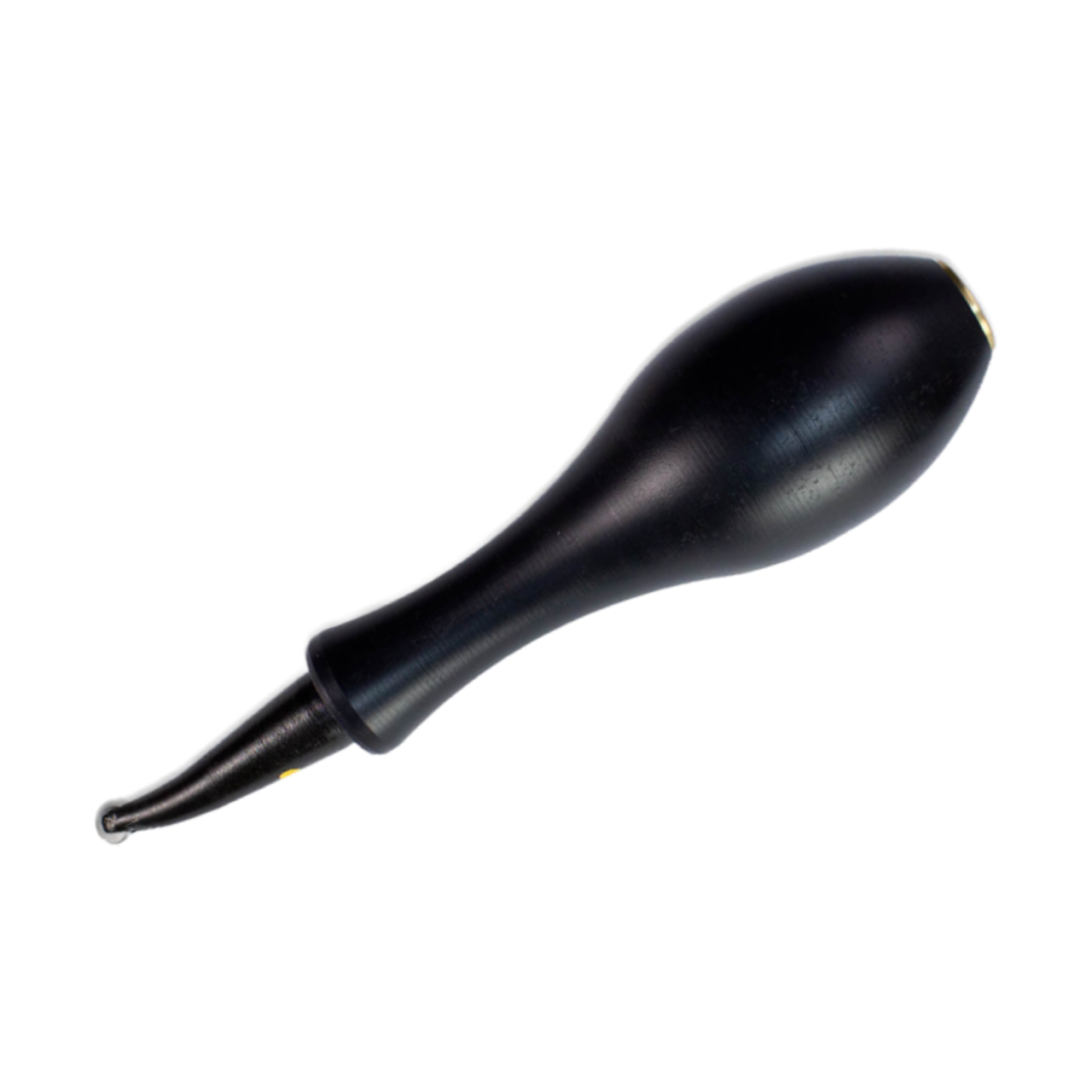
The Pommel-Grip Mini Cutter is a premium stained-glass hand-tool for making long cuts, either straight or curved, onto the surface of stained glass or larger glass tiles. This cutter is smaller than all the others, measuring about 4.75″ end to end. Weighing only 2.0 oz, it is the lightest stained glass cutter we sell, even lighter than the Economy Pistol Grip Cutter which weighs 2.3 oz. If you have smaller hands or are concerned about hand fatigue, this mini cutter could be your go-to glass scoring tool. The cutting wheel is tungsten carbide, and is meant for glass that is between 3mm and 6mm thick, such as the stained glass we sell. The body of the handle is made of solid polyamid, and has a brass striker at the end of the handle. This cutter does NOT contain a cutting oil reservoir. The tool can be used with one hand when the glass sheet is laid on a non-slip surface.
Pommel-Grip Mini Cutter does NOT contain an oil reservoir. If you prefer to use oil, you can have a little tray next to your work area, and pour a small amount of cutting oil into the bottom. Then, as you make cuts, you can periodically dip the mini cutter into the tray.
The Pommel-Grip Mini Cutter is a traditional stained glass tool, and is used for making long cuts. If you want to divide up a sheet of stained glass into fairly uniform square tiles, you could use this tool and a straight-edge ruler to cut the sheet into long strips and then cut the strips into tiles with a Mosaic Glass Cutter. However, mosaic art usually looks better when tiles aren’t uniform but instead are more irregular, and irregularly-shaped rectangles and triangles could be made using a Mosaic Glass Cutter without a stained glass cutter. In other words, this tool is not NEEDED for traditional mosaic work. On the other hand, if you want to make curved-shaped cuts in stained glass, this is the tool to use.
Stained glass cutters, like the Pommel-Grip Mini Cutter only score the glass; you need to snap the glass apart along the score. The best tool made for snapping apart scored glass is the Running Pliers hand tool, which has curved, padded jaws.
For more advice on designing your mosaic project or mounting, cutting, and grouting tile, please see our page of Mosaic Frequently Asked Questions or our Mosaic Information Guide, which lists instructional pages described by topic. We also post new articles about making mosaics at our How to Mosaic Blog.
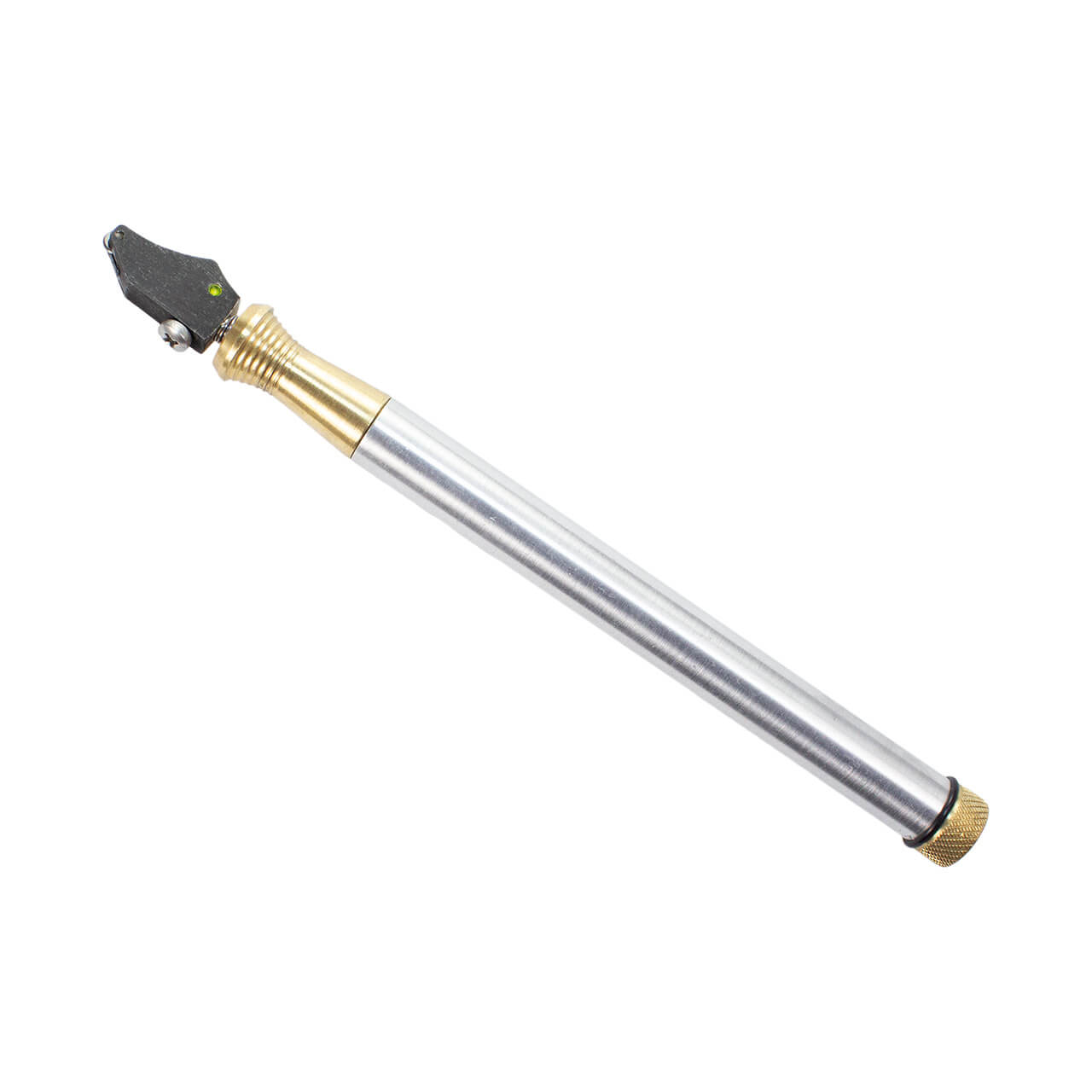
The Stylus Stained Glass Cutter is a premium stained-glass hand-tool for making long cuts, either straight or curved, onto the surface of stained glass or larger glass tiles. The cutting wheel is tungsten carbide, and is meant for glass that is between 3mm and 6mm thick, such as the stained glass we sell. The body of the stylus is made of aluminum, and has a brass neck and cutting oil reservoir cap. The tool can be used with one hand when the glass sheet is laid on a non-slip surface.
We don’t typically use cutting oil, but for artists who prefer to use oil, this tool has a reservoir in the pen body. The reservoir is accessible by twisting off the cap at the end.
The Stylus Stained Glass Cutter is a traditional stained glass tool, and is used for making long cuts. If you want to divide up a sheet of stained glass into fairly uniform square tiles, you could use this tool and a straight-edge ruler to cut the sheet into long strips and then cut the strips into tiles with a Mosaic Glass Cutter. However, mosaic art usually looks better when tiles aren’t uniform but instead are more irregular, and irregularly-shaped rectangles and triangles could be made using a Mosaic Glass Cutter without a stained glass cutter. In other words, this tool is not NEEDED for traditional mosaic work. On the other hand, if you want to make curved-shaped cuts in stained glass, this is the tool to use.
Stained glass cutters, like the Stylus Stained Glass Cutter only score the glass; you need to snap the glass apart along the score. The best tool made for snapping apart scored glass is the Running Pliers hand tool, which has curved, padded jaws.
For more advice on designing your mosaic project or mounting, cutting, and grouting tile, please see our page of Mosaic Frequently Asked Questions or our Mosaic Information Guide, which lists instructional pages described by topic. We also post new articles about making mosaics at our How to Mosaic Blog.
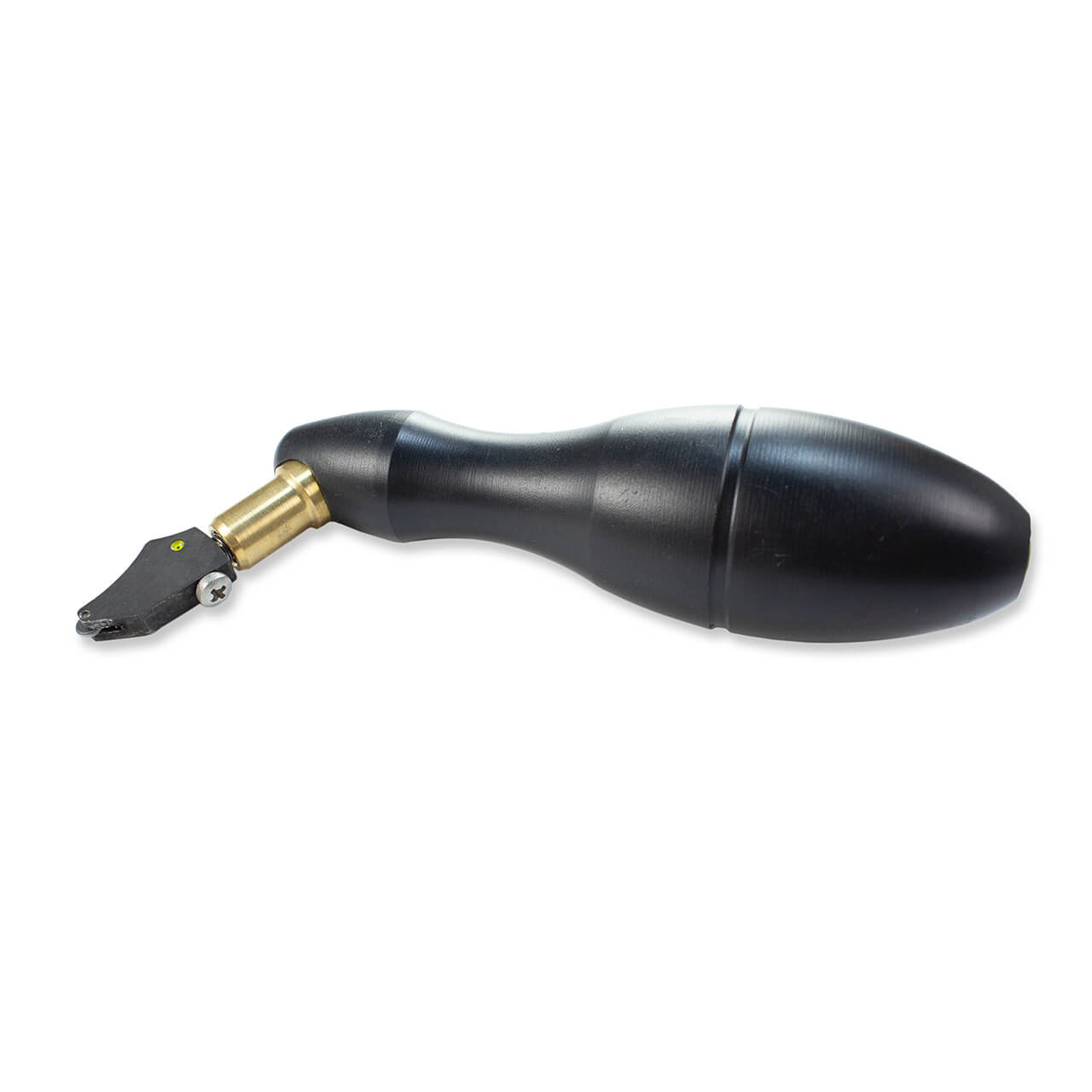
The Comfort Pistol-Grip Cutter is a premium stained-glass hand-tool for making long cuts, either straight or curved, onto the surface of stained glass or larger glass tiles. If you like pistol-grip style cutters, and you do a lot of cutting, then this is the tool for you. The smooth handle body feels much nicer in the hand than the hollow plastic pistol grip cutters commonly available on the market. The cutting wheel is tungsten carbide, and is meant for glass that is between 3mm and 6mm thick, such as the stained glass we sell. The body of the handle is made of solid polyamid, and contains a cutting oil reservoir accessible at the end of the handle. The tool can be used with one hand when the glass sheet is laid on a non-slip surface.
We don’t typically use cutting oil, but for artists who prefer to use oil, this tool contains a small reservoir. The reservoir is accessible at the back of the tool with a flat-head screwdriver (not included).
The Comfort Pistol-Grip Cutter is a traditional stained glass tool, and is used for making long cuts. If you want to divide up a sheet of stained glass into fairly uniform square tiles, you could use this tool and a straight-edge ruler to cut the sheet into long strips and then cut the strips into tiles with a Mosaic Glass Cutter. However, mosaic art usually looks better when tiles aren’t uniform but instead are more irregular, and irregularly-shaped rectangles and triangles could be made using a Mosaic Glass Cutter without a stained glass cutter. In other words, this tool is not NEEDED for traditional mosaic work. On the other hand, if you want to make curved-shaped cuts in stained glass, this is the tool to use.
Stained glass cutters, like the Comfort Pistol Grip Cutter only score the glass; you need to snap the glass apart along the score. The best tool made for snapping apart scored glass is the Running Pliers hand tool, which has curved, padded jaws.
For more advice on designing your mosaic project or mounting, cutting, and grouting tile, please see our page of Mosaic Frequently Asked Questions or our Mosaic Information Guide, which lists instructional pages described by topic. We also post new articles about making mosaics at our How to Mosaic Blog.